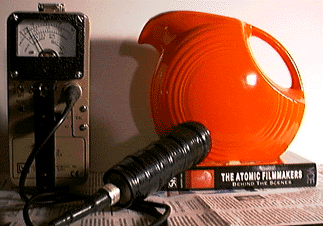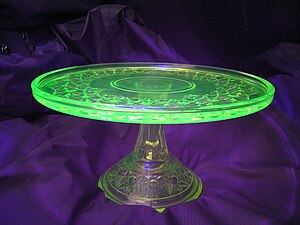Well, only if you're still setting the dinner table with your old Fiestaware from the 1960s. From 1936 through 1943, and from 1959 through 1969, the manufacturer used Uranium as a coloring agent in the glaze. The process needed to be discontinued from 1944 to 1958 as the U.S. government needed any and all available Uranium stockpiles for the war effort and the subsequent nuclear arms race. Seriously.
The use of Uranium in pottery glazes is central to a major plot twist in The Cenacle Scroll. The first example of such usage dates back to 79A.D., to a sample of green/yellow mosaic glass taken from a Roman villa near Naples, though that fact is in dispute. I managed to exploit that little-known factoid into a cause of considerable consternation for my protagonist and to the God-fearing public at large.
Uranium has also been used in glass (Uranium or "Vaseline" glass) since the mid-19th-century, reaching its peak popularity from the 1880s to the 1920s. The uranium content varies from around 2% to upwards of 25% for some mid-19th-century pieces. And you were worried about standing too close to the microwave oven!
The short video clip below demonstrates how "hot" a single piece of red/orange Fiestaware can be:
If you're interested in seeing how a smattering of science can be twisted into an entertaining societal farce, please be sure to check out The Cenacle Scroll, available at Amazon as a Kindle e-book.
Monday, March 29, 2010
Subscribe to:
Post Comments (Atom)








2 comments:
Wow - very interesting! I've heard that about the government stepping in and stopping Homer Laughlin from making their red Fiestaware. But that's really amazing how radioactive it really is!
Thanks for the video - very neat.
Thanks. It's incredible that they continued the process through 1969. You could bring an inexpensive Geiger counter with you when you go trolling flea markets for vintage pieces. It's one sure way to confirm its authenticity...
Post a Comment